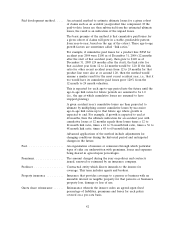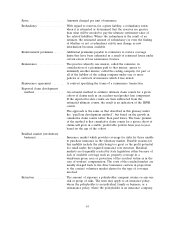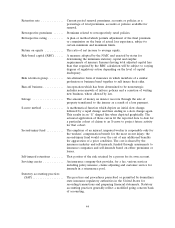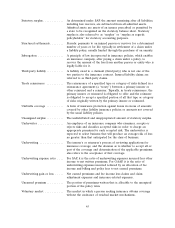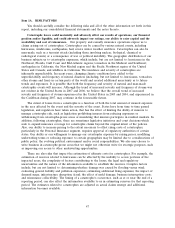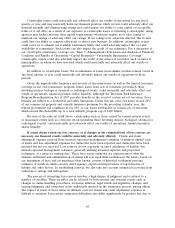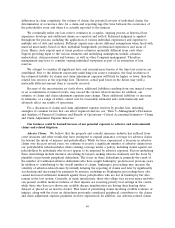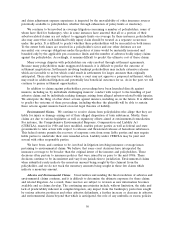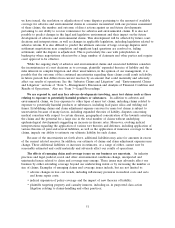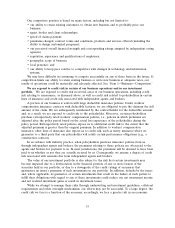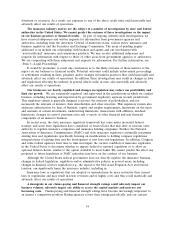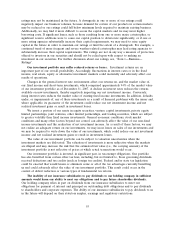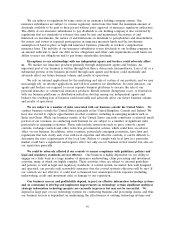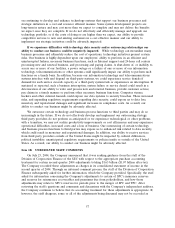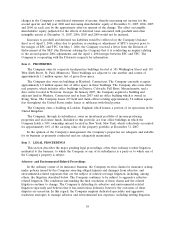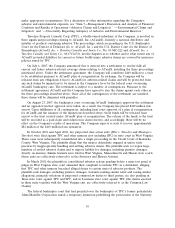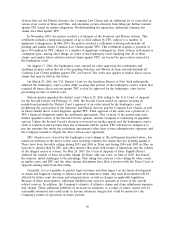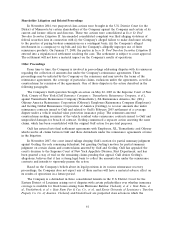Travelers 2007 Annual Report Download - page 63
Download and view the complete annual report
Please find page 63 of the 2007 Travelers annual report below. You can navigate through the pages in the report by either clicking on the pages listed below, or by using the keyword search tool below to find specific information within the annual report.we have issued, the resolution or adjudication of some disputes pertaining to the amount of available
coverage for asbestos and environmental claims in a manner inconsistent with our previous assessment
of these claims, the number and outcome of direct actions against us and future developments
pertaining to our ability to recover reinsurance for asbestos and environmental claims. It is also not
possible to predict changes in the legal and legislative environment and their impact on the future
development of asbestos and environmental claims. This development will be affected by future court
decisions and interpretations, as well as changes in applicable legislation, including legislation related to
asbestos reform. It is also difficult to predict the ultimate outcome of large coverage disputes until
settlement negotiations near completion and significant legal questions are resolved or, failing
settlement, until the dispute is adjudicated. This is particularly the case with policyholders in
bankruptcy where negotiations often involve a large number of claimants and other parties and require
court approval to be effective.
While the ongoing study of asbestos and environmental claims and associated liabilities considers
the inconsistencies of court decisions as to coverage, plaintiffs’ expanded theories of liability and the
risks inherent in complex litigation and other uncertainties, in the opinion of our management, it is
possible that the outcome of the continued uncertainties regarding these claims could result in liability
in future periods that differs from current reserves by an amount that could materially and adversely
affect our results of operations. See the ‘‘Asbestos Claims and Litigation’’ and ‘‘Environmental Claims
and Litigation’’ sections of ‘‘Item 7—Management’s Discussion and Analysis of Financial Condition and
Results of Operations.’’ Also see ‘‘Item 3—Legal Proceedings.’’
We are exposed to, and may face adverse developments involving, mass tort claims such as those
relating to exposure to potentially harmful products or substances. In addition to asbestos and
environmental claims, we face exposure to other types of mass tort claims, including claims related to
exposure to potentially harmful products or substances, including lead paint, silica and welding rod
fumes. Establishing claims and claim adjustment expense reserves for mass tort claims is subject to
uncertainties because of many factors, including expanded theories of liability, disputes concerning
medical causation with respect to certain diseases, geographical concentration of the lawsuits asserting
the claims and the potential for a large rise in the total number of claims without underlying
epidemiological developments suggesting an increase in disease rates. Moreover, evolving judicial
interpretations regarding the application of various tort theories and defenses, including application of
various theories of joint and several liabilities, as well as the application of insurance coverage to these
claims, impede our ability to estimate our ultimate liability for such claims.
Because of the uncertainties set forth above, additional liabilities may arise for amounts in excess
of the current related reserves. In addition, our estimate of claims and claim adjustment expenses may
change. These additional liabilities or increases in estimates, or a range of either, cannot now be
reasonably estimated and could materially and adversely affect our results of operations.
The effects of emerging claim and coverage issues on our business are uncertain. As industry
practices and legal, judicial, social and other environmental conditions change, unexpected and
unintended issues related to claim and coverage may emerge. These issues may adversely affect our
business by either extending coverage beyond our underwriting intent or by increasing the number or
size of claims. Examples of emerging claims and coverage issues include, but are not limited to:
• adverse changes in loss cost trends, including inflationary pressures in medical costs and auto
and home repair costs;
• judicial expansion of policy coverage and the impact of new theories of liability;
• plaintiffs targeting property and casualty insurers, including us, in purported class action
litigation relating to claims-handling and other practices;
51



